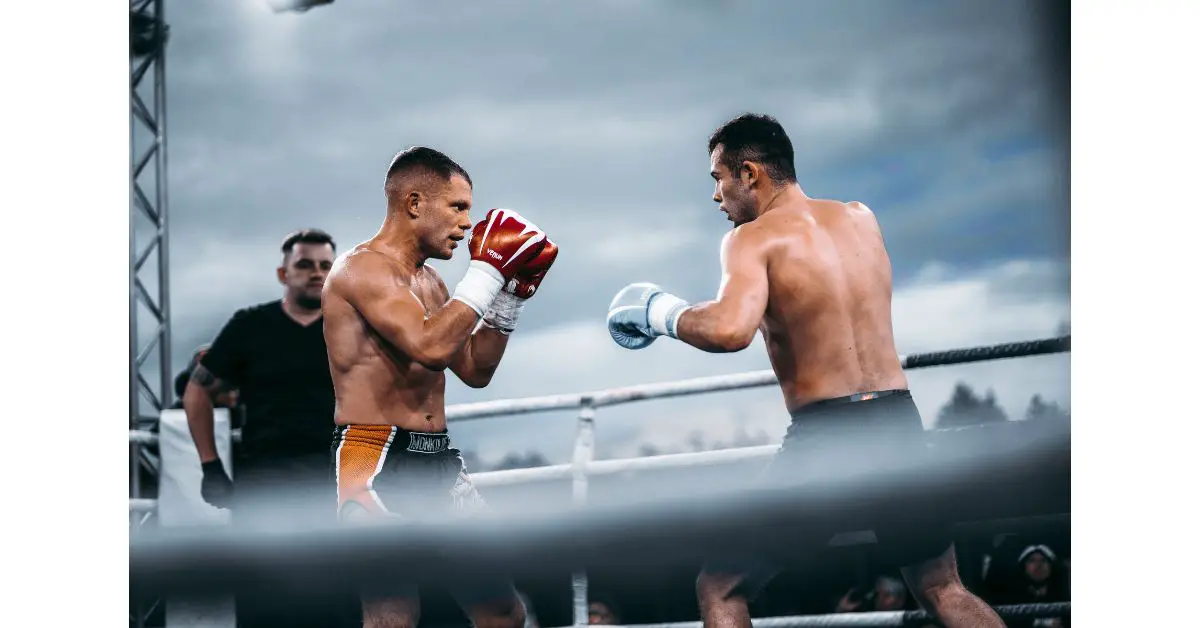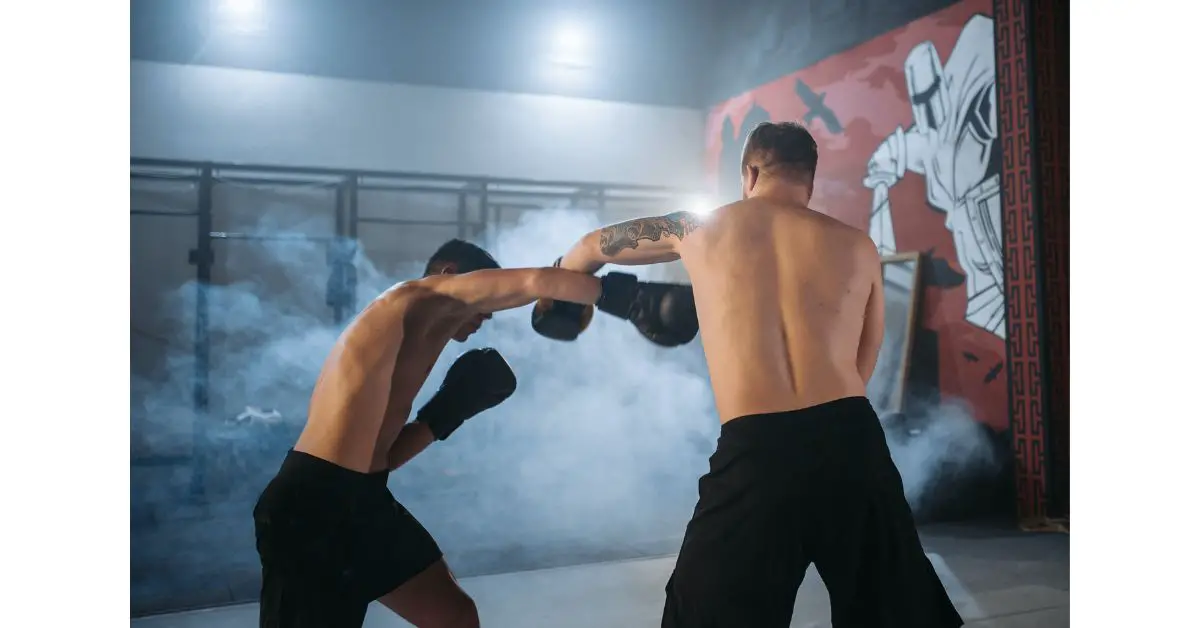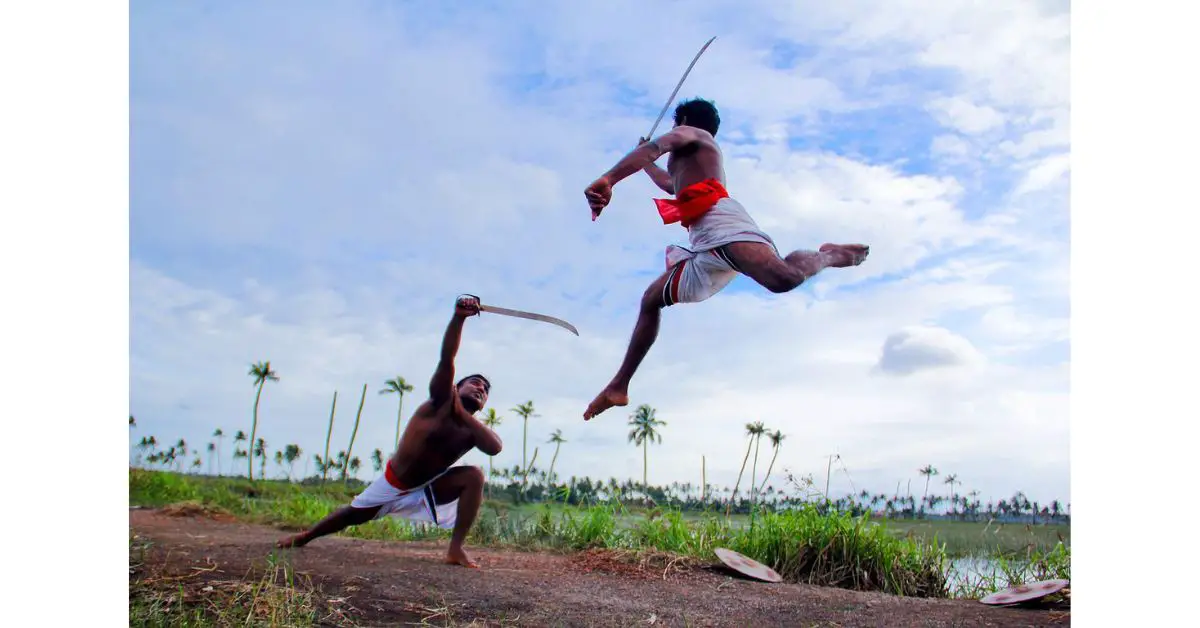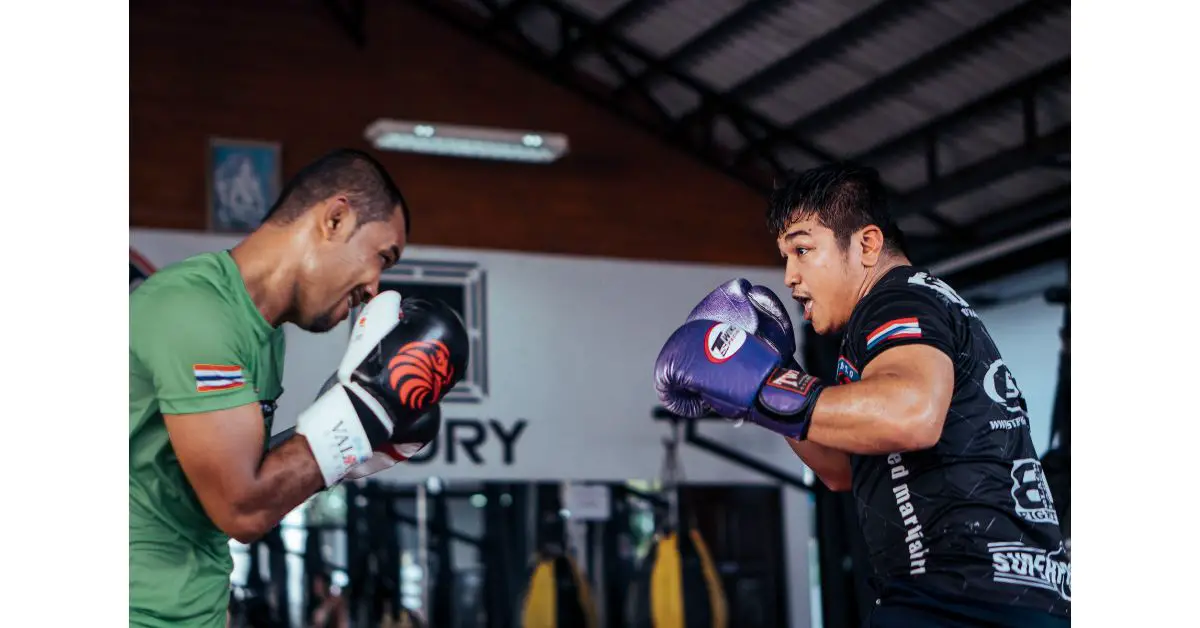Learning any martial art will positively impact your life. Mainly, Krav Maga and Karate are two effective and suitable fighting styles for self-defense and other fighting purposes. So, what are the differences between them, and which should you learn?
Karate is traditional martial art- that primarily focuses on punching and kicking. On the other hand, Krav Maga is modern and has no specific focus. Instead, it’s a self-defense system the Israeli military uses to train its special forces operators.
So, which one should you learn? Well, the answer will be entirely individualistic.
If you want to learn fighting techniques and proper self-defense, the answer is Krav Maga. However, if you decide you want to practice a traditional fighting style and go through a self-development journey, Karate is more suitable.
Having said that, one may be more suitable than the other. For example, one person may stay consistent with Krav Maga. However, another may give up and leave training if he were to train in KM.
Therefore, you must learn a fighting style you know you want to learn. As a result, you’ll keep yourself eager and waiting for more, which will cause more consistency and dedication regarding the martial art you’ll learn.
So now, let’s examine which style is better and why.
Which is better, Karate or Krav Maga?
Comparing two fighting styles is demanding, as skill plays a significant role. However, we can assume that two fighters of the same skill level were to fight; one from Krav Maga and another from Karate. So, let’s see who would win:
Karate is better than Krav Maga because it’s a traditional martial art whose sole focus isn’t self-defense but values. On the other, Krav Maga is straightforward and focuses solely on realistic situations, which is also an advantage. However, if a Karate and a KM master were to fight, the first would take the victory.
But again, notice how everything is in the air and not straightforward. That’s because comparing 2-martial arts- is incredibly challenging, as we can only guess from pure research. However, only research and examinations will make facts from thinking.

And still, I’m confident Karate is superior to Krav Maga because it includes more content than the latter. As a result, its trainees will be capable of adapting better to any situation than KM trainees.
Nonetheless, Krav Maga is a great fighting style constructed for self-defense. Because of that, if that’s your sole goal, I hope you consider it, as it’s most suitable.
To summarize, Karate is more dynamic than Krav Maga and includes more techniques and other aspects of fighting. As a result, its trainees will eventually become solid fighters.
The differences between Karate and Krav Maga
To know which martial art suits you best, you must know their differences. If you don’t choose the style that fits you best, you’ll eventually end up quitting and not noticing any results.
The following sections will discuss the differences between Karate and Krav Maga.
Again, I want to emphasize how critical it is to familiarize yourself with the differences. If you do, you’ll become capable of making the wisest choice and enjoy your training.
Difference #1- Fighting techniques
The first difference is the fighting techniques you’ll learn. This may be the most critical aspect you’ll need to know. So, let’s examine which teaches what.
Krav Maga is the art of self-defense. As a result, it teaches everything that works, including punching, kicking, clinching, grappling, kneeing, elbowing, groin kicks, and even eye gouges. As you can see, the list is long and goes even further. In short, it’s the practice of everything that works.
Karate is a traditional fighting style that teaches punching and kicking. However, contrary to Krav Maga, which’s sole purpose is to teach people self-defense in realistic situations, Karate also instructs trainees to develop certain values, such as discipline, consistency, and work ethic.
The previous 2-paragraphs are a summarization of these martial arts. If there’s information I want you to take from this article, it’s that. You need to know what each instructs before you begin training.
You may not want to study specific techniques, such as grappling. Moreover, you may prefer not to learn traditional martial arts. In that case, you ought to choose KM, as it’s modern.
On the other hand, you may prefer to enrich yourself with values and go through a self-development journey. As a result, it’ll be best if you choose Karate as your primary style.
Difference #2- Origin
The second difference is the origin. Although not as critical as the previous difference, it’ll help if you familiarize yourself with it.
Eventually, the place of origin of a martial art dictates how it looks today. So, knowing the origin may not indicate whether you’ll want to learn it or not; still, it’s vital to enrich yourself with as much background information as possible.
The origin of Krav Maga is Czechoslovakia. Today, while schools from all around the globe teach this art, the Israeli military is most known for using it often. Today, special forces operators learn it and practice it since it doesn’t take as much time to learn.
KM is a straightforward style. As a result, it won’t take as long to go through an entire Krav Maga course in less than a year. Although it may seem like plenty of time, compare it with Karate, which takes more than 10 years to master- and perspective hits you.
The truth is, learning KM isn’t as tricky since it’ll take a shorter period than the average martial art.
Karate originates from Okinawa, an island in Japan. The people of Okinawa wanted to learn self-defense to become capable of defending themselves. As a result, they constructed a new fighting style. Today, this style is mainly known as Karate.
To summarize, the origin doesn’t matter as much as other aspects, such as the next and the previous one. However, knowing it- is beneficial to your knowledge and will help you make a wiser choice.
Difference #3- Targeted audience
This difference is a by-product of the previous 2-differences. Eventually, the target audience of any martial art is influenced by many factors, such as the fighting techniques and approach.
Krav Maga’s targeted audience is the military and self-defense schools. As a result, if you’re an individual wanting to experience the world of martial arts, it may not be as suitable. In that case, Karate, traditional martial art with many values- will be more fitting.

Nonetheless, that’s the reason special forces operators learn Krav Maga. It’s one of the simplest fighting styles you can learn. Consequently, special forces operators learn it, as it doesn’t take too much time of their training.
Picture a special forces operator mastering the art of Karate in his training. Honestly, that doesn’t sound very smart. Because of that, KM, which uses aggressiveness and explosiveness more than any martial art- is more suitable.
To summarize, the targeted audience of Krav Maga is different than Karate since it emphasizes explosiveness and aggressiveness more than Karate. However, Karate emphasizes values and traditional fighting movements to cause massive damage quickly. Additionally, it speaks more to people who want to go through a self-development process.
The similarities between Karate and Krav Maga
Thus far, we’ve discussed the different existing traits between Krav Maga and Karate. Frankly, that was the most critical part. However, there’s always more to know.
You’re not alone if you struggle to choose which fighting style to learn. To make the wisest choice, you must ensure you know as much as possible about both the differences and similar traits between the two martial arts.
As a result, understanding the following principles- is crucial. As such, the following sections will discuss the similarities between KM and Karate.
Similarity #1- Purpose
The first similar trait is their purpose. Everything exists for a reason, for a value. Therefore, it’s only common sense that fighting styles exist for one primary reason: to teach people to fight.
I can confidently say that both Karate and Krav Maga fulfill this purpose and numerous others. In fact, it’s not uncommon to see different individuals training in martial arts for many various reasons.
Another value they add is self-improvement. Both fighting styles will positively impact your life. As a result, it’s a fantastic way to better and grow your mental and physical selves.
Although I want to keep this section short since the next one expands upon it, I will say that if you don’t want to achieve their purpose, you’re more likely to quit in the middle of the process.
In simpler words, if you don’t want to learn to fight, it’ll be best if you stick to other exercises, such as running or weight lifting.
All martial arts’ primary purpose is to teach you to fight. As such, if you don’t seek to achieve this as a by-product of your training, you’re not as likely to keep up with training and dedicate yourself to it.
So, before you begin training, think about whether you want to know self-defense or how to fight. If the answer is yes, I encourage you to start as soon as possible.
Similarity #2- Benefits and results
Regardless of your goal or purpose for training, many similar benefits and results will naturally flow into all the trainees’ lives. As a result, it doesn’t matter as much what you’re doing but the fact you’re doing it.
For example, all martial arts trainees will improve their physical condition in some way or another. Even in Tai Chi, your physical health will positively shift. That’s one of the more prominent reasons you should study any fighting style.
Now, let’s dive into our case.
Karate and Krav Maga will grant their trainees the same benefits, mental and physical. For example, because they’re both platforms for practitioners to release built tension, it’ll reduce stress levels.
Moreover, they’re also a platform for their trainees to overcome many obstacles. With time, they’ll get a sense they can achieve everything if they put their minds to it. So, you can see how it improves confidence and self-esteem.
Visual inspection showed that four participants improved their global self-esteem. Self-efficacy was improved in three participants whereas the other two had high self-efficacy before participation in the karate program.
Source
The list of benefits Karate and KM grant their trainees is longer than you think. For instance, it’ll improve your eye-hand coordination. Of course, that’s one minor result – but you get my point.
Similarity #3- Difficulty and Hardships
The last similar trait- is the difficulty of the training. Eventually, physical exercise is demanding physically and mentally. As a result, most people won’t stay as consistent with their training since willpower starts playing once the initial batch of motivation is cooked.
The most challenging stage in Karate and KM training is the beginning since motivation won’t last for the entirety of your journey. Instead, willpower will begin to play a significant role in your training life.
Whether you train in Krav Maga or Karate, you’ll experience the same hardships. Mostly, you’ll have issues staying consistent with the journey. Now, that’s entirely understandable and valid. And still, if you decide to give up, you’ll only find yourself not gaining the results we spoke about earlier.
One neat tip you can implement in your life is to set small milestones. Unfortunately, most people do the opposite; they set an end goal (which is fine), and then they focus only on it (which isn’t fine). As a result, they can’t experience the small victories every session attracts.
Nonetheless, if you set small milestones, such as learning a technique or advancing to the next belt, you’ll be fine for the rest of your journey.

But, if you’re a white belt and your goal is to attain the black belt and master the martial art, you’ll only end up dissatisfied with the amount of time and effort you invest.
Which is better for self-defense, Karate or Krav Maga?
Throughout this article, I’ve mentioned numerous times that Krav Maga uses aggressiveness and explosiveness to beat the opponent swiftly. Moreover, Karate has similar traits, but not as many as the first one.
Krav Maga is better than Karate for self-defense because it’s a fighting style explicitly constructed for self-defense. Worldwide, numerous militaries teach their operators Krav Maga because of its aggressive and explosive traits. Hence it’s especially suitable for self-defense.
Karate is a traditional fighting style. As such, it wasn’t nor is constructed only for self-defense. Although it was its initial purpose, it developed to be a way of self-improvement and values rather than solely focusing on self-defense.
Although that’s fine, it fits other purposes better. Consequently, if you desire to study self-defense and self-defense only, it’ll be best to stick with Krav Maga.
Should I learn Karate or Krav Maga?
To answer the above question, you must understand that while one martial art is more suitable for one, another one will fit best for another. As a result, the answer I’ll provide should be treated as guidance and not as a fact.
If you desire to study a traditional martial art that is a form of self-improvement while being fantastic for fighting purposes, consider Karate. On the other hand, Krav Maga is most suitable if you want to know only about self-defense.
I’m a big fan of both Krav Maga and Karate. Naturally, I cannot give you a straightforward answer describing how much I fancy one martial art over the other.
So, I will advise you to think of your purpose. Why do you want to learn martial arts? If the answer is to learn to fight only, I encourage you to think about KM.
But, if you want to go through a self-improvement process while positively impacting your life, consider Karate or any other traditional fighting style.
If you want to know more about the different martial arts and which are best for what purpose, follow the link to an article of mine.
Final words
I can’t see myself living without martial arts. Indeed, they have changed my life.
When I was in the military, I went through a 14-month Krav Maga course. I was much calmer and collected when I finished it, yet I could unleash the beast inside me whenever I needed to.
As a result, it has positively impacted my life and changed how I live today.
If you’re struggling to choose between two martial arts, what you are is not alone. We all go through many struggles; sometimes, the choice is more complicated than the actual training.
Ironically enough, choosing which martial art to learn is, at times- more challenging than beginning to train and to go through the process.
So, if there’s a single piece of advice I’d like you to take from this article, it’s best to start as soon as possible and fail than not start at all.
If you enjoyed reading this post, I encourage you to read an article I wrote about how to train martial arts at home; without as much cost as attending fighting classes.


